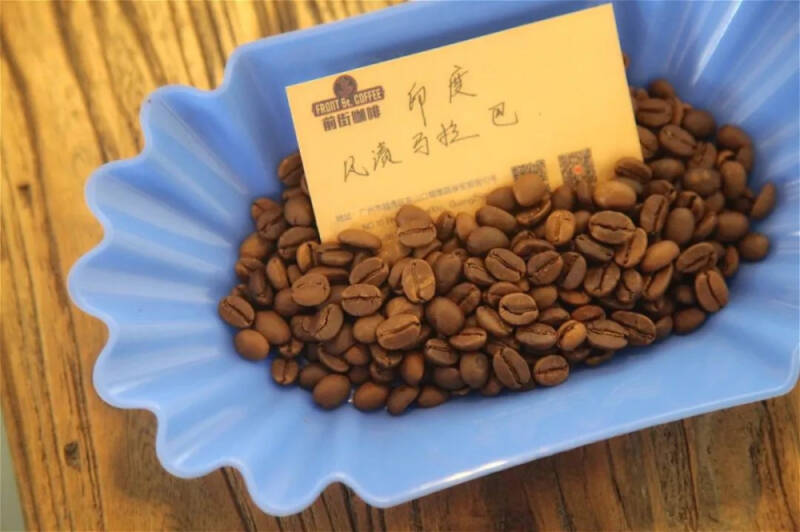How is India's Monsoon Malabar Coffee handled? What is the Wind Stain Method?
In fact, in addition to the old Mantenin, there is also a well-known coffee that has been placed for a long time. The way it is made is different from the tradition, and it is delicious only after being blown by the wind. And it comes from India, a little-known area of the coffee industry. When it comes to Indian food, I believe people will immediately think of curry; when it comes to Indian coffee, then "monsoon coffee" must be the first association word. Compared with the large number of Robusta, the process of making monsoon coffee will be more impressive. So today, with Qianjie, let's explore how this "monsoon coffee" from India is made.

Monsoon coffee as early as the 17th century, India has become in addition to the Yemeni mocha, an important supplier of coffee to European countries! It is at this point in time that there are signs of the birth of monsoon coffee. India, like Indonesia, which produces old Manning, belongs to Asian countries. Therefore, we can know that in the 17th century, the transportation of coffee beans was also very time-consuming for India.

At that time, India's means of transport was sailboats, and coffee beans would pile up at the bottom of the cabin! The cabin on the ground floor is the closest to the sea. This causes the coffee beans to absorb the moisture and salty taste of the sea water while being transported, and the nature of the coffee beans has changed by the time they arrive in Europe. The original full and moist turquoise coffee beans, eroded by the smell of the sea, swelled and put on a yellowish-brown appearance like rice. The coffee tastes almost sour, full-bodied of grains and spices, but not exciting, very soft, with the taste of Xuanmi tea. This unique taste was a rare delicacy for Europeans at that time, so the coffee produced in India was very popular at that time.
By the nineteenth century, the maritime transport industry had a great improvement. The advent of steamships and the opening of the Suez Canal have cut the transportation time of Indian coffee by about half for six months. Reasonable, coffee beans less uncontrollable factors should have been a good thing, but did not think that the Europeans did not buy it?! There is not much sea water erosion that allows coffee beans to retain their original appearance, but it is this that makes Europeans unhappy! Beans shipped from India not only lose the charming yellowish-brown color of the past, but also become more common in taste (if you don't know what this concept is, friends can imagine that the rosy summer of Panama does not taste like white flowers). As a result, orders from Europe are decreasing every day! Out of helplessness, Indian raw bean exporters began to study how to replicate such a delicacy.
It is naturally impossible to bring the shipping time back to six months. After all, it takes too much energy and financial resources. Therefore, if you want to have a stable, low-cost reproduction, of course, you can only find another way. In the end, exporters do find a solution: every year from late May to September, there is a sea breeze along the coast of Malabar in southwestern India, and the original environment is blown with a little more moisture. As a result, exporters began to wonder whether coffee could be restored to its former delicacy through this monsoon. In several experiments, it really verified the feasibility of this idea! After months of monsoon baptism, coffee recreates the delicacy brought by long shipping, and exporters are able to sell classics again! As a result, the coffee beans that need to be baptized by the Malabar monsoon are called "monsoon coffee". This unique treatment is known as the "weathering method".
The wind-soaked method also uses the pre-treated coffee beans, and the wind-stained beans will not be treated until the raw coffee beans are treated in the sun. However, as mentioned above, the "monsoon", the main operator of the weathering method, does not exist all the time, so if the coffee beans have been harvested and processed before the monsoon, they need to wait through storage! Coffee beans will be stored in specially designed weathered rooms waiting for the monsoon! When the monsoon season comes, the beans will be laid flat on the ground by workers and will accumulate to a height of about 12 to 20 centimeters! In this way, when the monsoon comes, you can directly "impact" on the coffee beans (face the monsoon! ).
Then the workers will use the rake to roll the coffee beans regularly so that the monsoon can touch the rain and dew. In about five days, the beans will be bagged when the wind stains reach a certain degree. When bagging, workers will pay attention to reduce the load, so that the bag will not be filled with coffee beans. Because this can reduce the superimposed gravity, leaving a large gap between beans and beans, so that the monsoon can pass through.
Bags are basically changed regularly in order to reduce the probability of mold. And this period of time baptized by the wind is called the "weathering period"! The weathering period lasts for 12 to 16 months, and the end time is determined according to the state of the beans. Then, after the wind-stained beans will be smoked, in order to drive away hidden in the beans weevil, after all, coffee beans are also agricultural products, insect infestation is an inevitable phenomenon. Finally, the processed beans are screened to remove those that have not been completely affected by the monsoon. Then it can be graded according to its taste and size, and then it can be sold.
-END-
Front Street Cafe
No. 10 Baoqian street, Yandun road, Dongshankou, Yuexiu district, Guangzhou, Guangdong province
Important Notice :
前街咖啡 FrontStreet Coffee has moved to new addredd:
FrontStreet Coffee Address: 315,Donghua East Road,GuangZhou
Tel:020 38364473
- Prev

Original price compensation theme shop, the main one touch!
▲ Click attention| Daily Boutique Coffee Culture Magazine Coffee Workshop Today, the cafes on the street have a variety of styles, minimalist style, retro style, Showa style, etc., different styles of stores let consumers in one of the door like to a different coffee world, so some unique style coffee shops can always hook
- Next

How is coffee made? How do you get a latte with milk bubbles?
Here it comes, everyone has been calling for pull flower 2.0 version of it! Come on! It was! Today, the front street will share the advanced design of the white heart-"thousand hearts"! In fact, it was not difficult to say that it was not difficult because it was made by adding a small action on the basis of Bai Bai Xin. Everything else, whether it's integration,
Related
- Is espresso stored overnight in the refrigerator harmful to your body? Is frozen coffee better than freshly ground coffee?
- What parameters and proportions of water temperature should be used to grind and brew fresh coffee beans? Why can't I drink freshly roasted coffee right away?
- Customers have "changed" Manner's new products! Shop assistant: Please don't mess around!
- Remove sockets in customer areas at Starbucks stores?! Netizen: I won't go if I really tear it down
- What is the difference between the taste steps of sun-dried coffee and washed coffee? Why is sun-cured coffee sweeter and washed coffee sour?
- The recipe for salty grapefruit dirty is revealed! Coffee Festival salty grapefruit dirty coffee making materials parameters ratio milk share!
- How about the flavor of Sunlight 74158 at Sidamo Banshaha Mathieu Processing Factory in Ethiopia? 74158 Share the proportion of coffee brewing parameters!
- What effect does Italian American coffee with filter paper have? Will coffee taste better if it is put on filter paper at the bottom of the powder bowl?
- What is the color difference in coffee beans? What are the characteristics of honey processed coffee beans? Why are the anaerobically treated coffee beans uneven in color?
- How does novice Xiaobai quickly get started and make coffee? Newbies learn to make coffee by hand and share the specific steps and process process!

